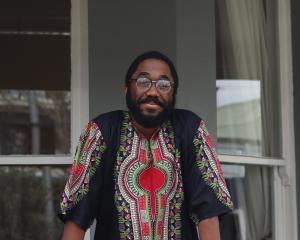
MY FATHER'S SHADOW: A Portrait of Justice Peter Mahon
Sam Mahon
Longacre, pbk, $40
Review by Kay Sinclair
Although not trained to write, Canterbury-based painter and sculptor Sam Mahon demonstrated his ability as a skilful and engaging writer with his first two books, The Year of the Horse and The Water Thieves.
But attempting a portrayal of his father, Justice Peter Mahon, whose memorable line "an orchestrated litany of lies" still resounds from the Erebus inquiry into the 1979 DC10 crash in the Antarctic, must have seemed daunting.

When he realised not enough detailed information existed for that, he had to accept the book would have to be more of a memoir than a biography; "a sketch if you like, with smudges and rubbings out, and my fingerprints all over it".
Mahon succeeds wonderfully in presenting an insightful picture of the complex person who was his father; the skilful lawyer who was one of the prosecutors in the infamous 1954 Parker Hume trial, and the distinguished High Court judge who suffered in the aftermath of the Erebus inquiry, not only because of the Court of Appeals finding of a breach of natural justice, but also because of the friends who felt unable to associate with him.
While acknowledging he did not know his father well and that they disagreed on many things, one of the passions they shared was a love and appreciation of nature and wildlife.
"I learned from my father the difference between a male and female chaffinch while I was still very young," Mahon writes.
"And the sight of a grey warbler's nest strung on threads from a high branch with its distinctive side-entrance was like finding gold."
Some of the most evocative descriptions are of the land, whether the hot, dusty North Canterbury countryside of youthful memory, and the area where Mahon now lives, or the rugged hills of Italy where he visited a war grave cemetery.
He tells how he hated the suggestion that writing the memoir would be an emotional journey and says he has no time for terms so often used to describe art exhibitions - "a journey, a catharsis, a celebration".
But he then describes being totally overcome by emotion as he "steps through the shadow of the cemetery gate into bright sunlight", sees ranks of clean white marble stones and finds himself in the presence of 1152 young men "most of whom would have been the age of my daughter when they died.
"I couldn't breathe. I started to choke and began to cry . . . And I don't understand it. I can't explain it even now.
Mahon may not have known his father well - how many of us do? But what emerges in his memoir is a thoughtful picture, not only of a multi-talented if somewhat distant man, but of the complexity of the universal relationship between a father and son.
- Kay Sinclair is a Dunedin journalist.












